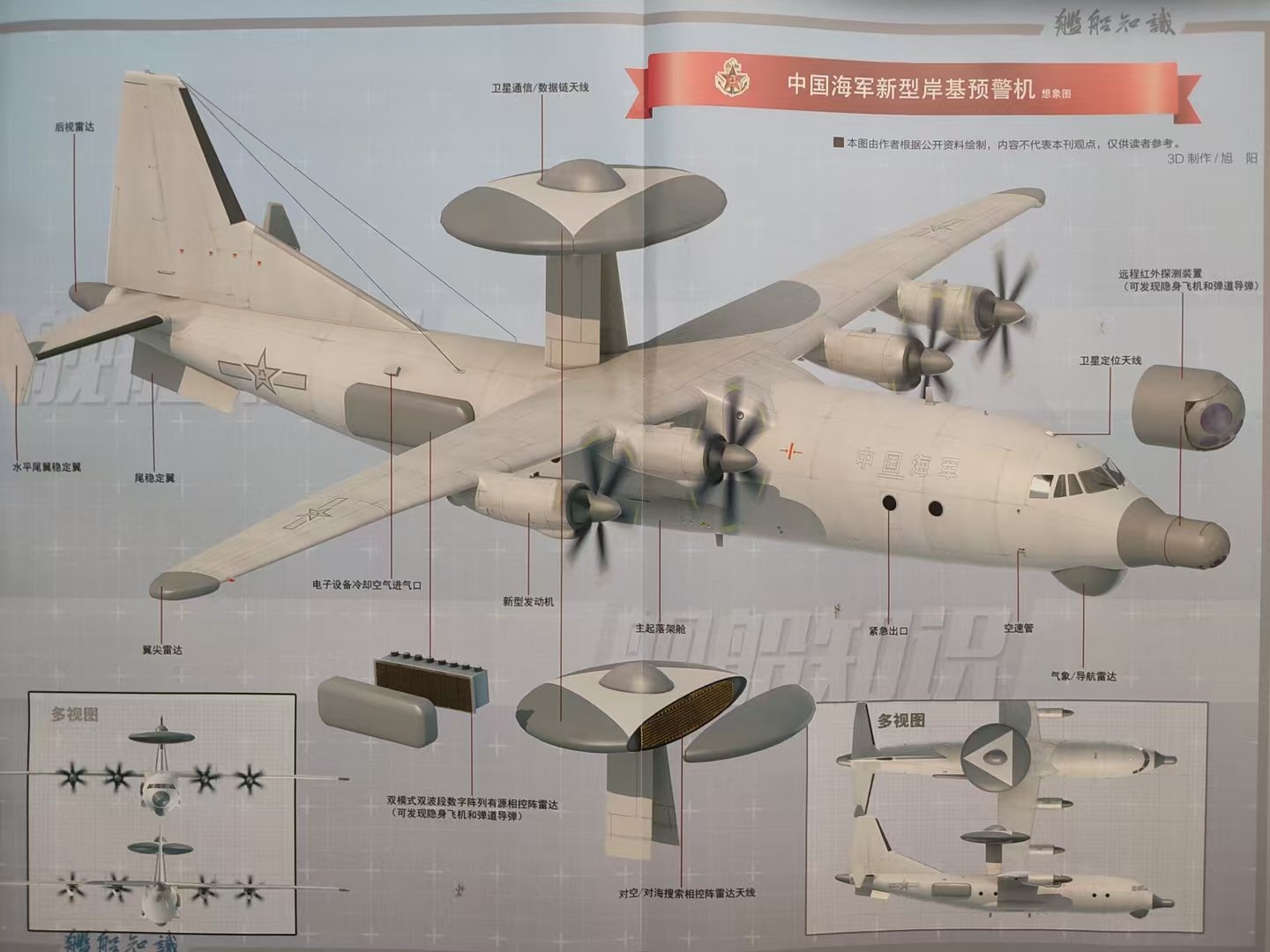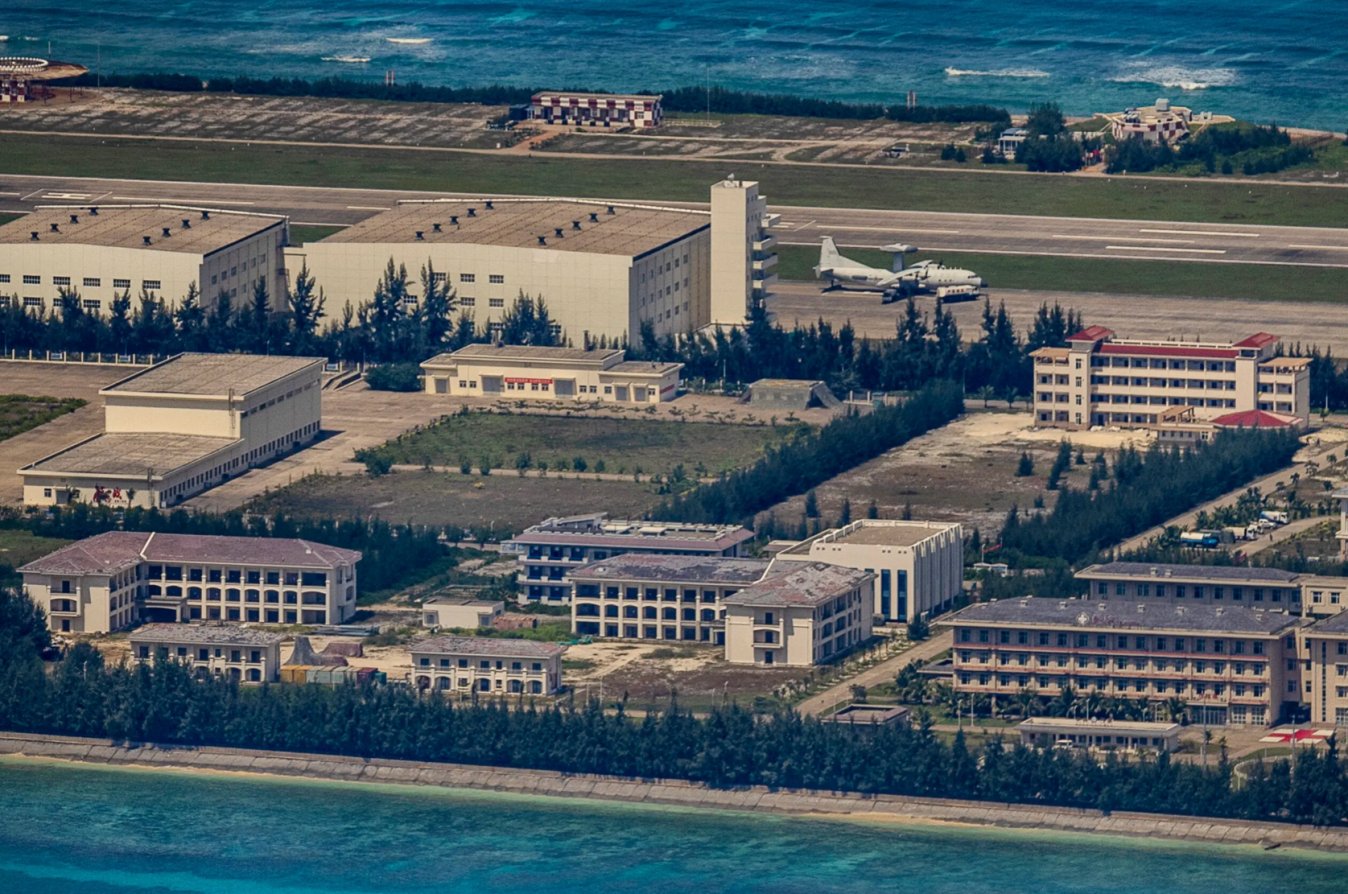We have gotten a new look at China’s enigmatic KJ-700 airborne early warning and control (AEW&C) aircraft in service with the People’s Liberation Army Navy (PLAN). This latest addition to China’s rapidly proliferating family of AEW&C platforms remains somewhat mysterious, although it appears to be something of a ‘multi-intelligence’ aircraft, combining both airborne radar as well as an array of electro-optical and infrared sensors, likely intended to track targets across air, sea, and potentially land domains.
You can read our previous in-depth analysis of China’s multi-layered and fast-growing AEW&C fleet here, with the KJ-700 being a new addition to the force, apparently now in both PLAN and People’s Liberation Army Air Force (PLAAF) service.
The photo in question depicts the PLAN’s KJ-700H version of the aircraft, apparently shown in flight for the first time. It shows the aircraft’s extensive sensor suite, with the familiar rotodome on the top of the fuselage complemented by multiple other antennas and fairings. On the sides of the rear fuselage are prominent rectangular-shaped fairings, thought to contain additional side-looking airborne radar (SLAR) in the form of active electronically scanned array (AESA) antennas. There is also evidence of an array of electro-optical windows in the ‘thimble’ nose cone. Further sensors are fitted on the wingtips and in the tail cone. Not visible in this view is the satellite communications (SATCOM) antenna mounted on top of the rotodome.

Reports of the KJ-700’s existence emerged in mid-2023, with the aircraft at that time rumored to have the alternative designation GX-16, making it the 16th member of China’s Gao Xin (meaning High New) series of special-mission intelligence-gathering and surveillance aircraft.
The apparent first prototype of the KJ-700 was identified in satellite imagery of the Shenyang Aircraft Corporation (SAC) airfield in December 2020. By June 2023, another two KJ-700s had been spotted in satellite imagery. The KJ-700H version for the PLAN was first sighted in June of last year, when it was reported that the aircraft had entered service at a base in northeastern China, facing South Korea and Japan.

When first revealed, it was anticipated that the KJ-700 would be China’s next-generation ‘medium’ AEW&C aircraft, perhaps as a successor to the KJ-500 series.
In the past, we have discussed how these smaller types of AEW&C platforms, in particular the turboprop-powered KJ-200 and KJ-500 series, are especially well suited to operations from more dispersed and even austere bases. It’s no surprise that they regularly appear at some of China’s island outposts, as well as operating routinely in the highly strategic Taiwan Strait.

Like the KJ-500, the KJ-700 is based on the airframe of the Y-9 transport, a much-modernized version of the Y-8, itself a Chinese copy of the Soviet-era An-12. Characteristics of the Y-9 include uprated WJ-6C turboprops driving six-blade high-efficiency propellers.
The rotodome of the KJ-700 is thought to contain a pair of distributed aperture radar (DAR) antennas, operating in different bands, in a similar arrangement to that found on the carrier-based KJ-600 AEW&C aircraft.
This radar, as in earlier AEW&C platforms, is chiefly used to scan for enemy aircraft and missiles, over large swathes of airspace, allowing friendly interceptors to be vectored against them. An elevated ‘look down’ capability like this means that it can spot low-flying aircraft and missiles that would otherwise be shadowed by the horizon or terrain for surface and land-based radars.
Meanwhile, the combination of the fuselage-mounted SLAR arrays and long-range electro-optical/infrared sensors suggests a multi-intelligence function. These sensors could be used for sea or ground surveillance, even if in a secondary role after airspace surveillance. Putting AEW&C as well as broader, multi-domain intelligence, surveillance, target acquisition, and reconnaissance (ISTAR) capabilities into a single platform would make for a highly flexible asset.
The KJ-700’s electro-optical/infrared suite reportedly includes large-aperture CCD cameras, imaging infrared cameras, and a powerful laser rangefinder. Putting an infrared sensor on an AEW&C platform isn’t an entirely new concept. Such a sensor should be especially useful for identifying targets visually at long range, but the electro-optical/infrared suite could also be well adapted to detecting aircraft with low-observable characteristics. In terms of surveillance, a powerful electro-optical sensor system would also be able to investigate objects on the surface, especially in the maritime domain, after being cued by the radar. It could also be used to support test activities, including tracking missile launches.

Other missions for the KJ-700 could include command and control (C2) as well as communications networking, especially valuable over the long distances in the Indo-Pacific theater.
Overall, the fact that China has introduced yet another AEW&C platform fits within its established doctrine of developing a range of different solutions to meet different aspects of this mission, as well as to keep pace with the expected types of threat.
Chinese AEW&C aircraft now do much more than keep watch over airspace and vectoring interceptors to respond to incoming fighters and bombers. As well as using their radar sensors for what was traditionally their primary task, these platforms are now much more than radar planes, with ESM suites that can passively detect and triangulate radio frequency emissions over long distances.
In the case of the KJ-700 specifically, if this is indeed a multi-intelligence aircraft, it is likely tailored to the kinds of missions that might be expected during a future conflict between China and the United States.
The KJ-700 would appear to be well suited to supporting operations in which China projects power over considerable distances, including into the highly strategic South China Sea. In this context, KJ-700s operating from smaller island and reef airstrips could play a vital role in detecting hostile aerial activity, not only by crewed fighters — including low-observable ones — but also drones and missiles that could otherwise pose a challenge for existing aerial surveillance systems.

Meanwhile, the startling pace of development in China’s AEW&C sector is one highlight of the unclassified version of the latest annual Pentagon report to Congress on the country’s military, released last December.
“Production and deliveries of the KJ-500 — the PRC’s most advanced AEW&C aircraft — continued at a rapid pace, joining earlier KJ-2000 Mainring and KJ-200 Moth variants,” the report notes. “These aircraft amplify the PLAAF’s ability to detect, track, and target threats in varying conditions, in larger volumes, and at greater distances. It extends the range of the PLA’s IADS [integrated air defense system] network. Furthermore, the PRC has produced at least one KJ-500 with an aerial refueling probe, which will improve the aircraft’s ability to provide persistent AEW&C coverage.”
Whatever the precise role of the KJ-700, the aircraft appears to be part of both the PLAAF and the PLAN as one of a growing number of AEW&C platforms now in Chinese service. With at least 60 fixed-wing types now in AEW&C service, Beijing not only operates a notably large — and growing — force of radar planes but also continues to develop these aircraft with various different characteristics and specializations.
Contact the author: thomas@thewarzone.com
